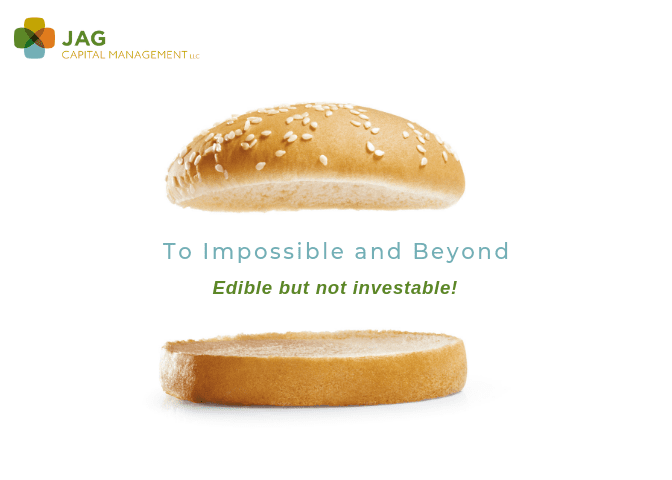A revolution is underway in food science. Plant-based meat substitutes that taste like meat are now on the market. The food craze has set-off a stock craze. Beyond Meats has appreciated by 40% since its initial public offering in April, and Impossible Foods is preparing to raise equity.
- The ingredients of these new foods provide some opportunities and some challenges.
- Health benefits are dubious, but environmental benefits are clear-cut.
- Production capacity additions are likely to chip-away at premium prices.
Recipes for Success
On the opportunity side of the ingredient ledger, both companies have formulated products using new grains and grain combinations. Veggie burgers are not a new invention, as bean-based meat substitutes have been available for years. Instead of commonly used black beans, Impossible Foods uses a soy-based grain supplemented with potato protein. Soy has the advantage of having a readily available supply. Beyond Meats uses protein paste extracted from dry, yellow peas. Most of us know variants of these plants as chickpeas and fava beans. Peas have the advantage of being relatively high in fiber.
On the challenges front, additives to both grains have some health issues. One of the selling points of the new plant-based meat formulations is that they have a red color, similar to meats and that they have a meaty taste. Beyond Meat uses beet juice extract to provide their color. While that additive is not too controversial, the additive that Impossible Foods uses does draw attention. Leghemoglobin is a soy product created using a lab-based, wheat fermentation process. The resulting substance yields an iron-like taste similar to blood found in most meat products. “Heme,” as it is called for short, has been assigned health risks akin to those encountered with eating actual meat. Additionally, something about the contents of the Impossible Burger over-indexes Vitamins B1 and B2. Thiamine levels in these products are more than 2,000% of the recommended daily level.
